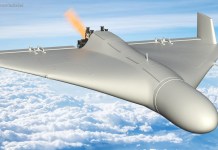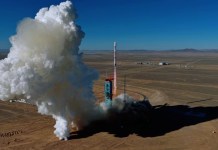Carrying out military operations while navigating through international waters is a tricky business, especially at a time when the United States Navy is dealing with Chinese warships and submarines in the alien maritime space like the heavily contested South China Sea.
Power Index: US The Most Dominant Military Power, China The Financial Super-Power
While President Donald Trump has a confidant in Taiwan due to their brewing military friendship which goes beyond just the export of advanced weapons to the island nation, Pentagon wants a steady support bestowed to its submarines meandering solitarily below the sea surface.
An area which could pave the way for the nation to supply materials and important information is through the use of drone technology, which has through the years increasingly being used to transport cargo from one point to another.
On Monday (October 19), the US Navy undertook a similar exercise in the Pacific Ocean near Hawaii, under which it used a quad-copter-type drone to deliver a small payload to its Ohio class ballistic missile submarine USS Henry M. Jackson.
To what presented a brief glimpse of the future naval operations, the unmanned aerial vehicle carried a package to officials standing near the forward fin of the partially submerged submarine.
While it is still unclear whether the US submarine is on a deterrent patrol at present or not, according to the US Navy, the drill was a means to explore novel concepts for resupplying Ohio class submarines while they’re out on their nuclear deterrent patrols.
As part of a caption released by the Navy for one of the pictures of the submarine, which was in its homeport in Washington State after completing its 100th deterrent patrol in September, it said,
“Underway replenishment sustains the fleet anywhere/anytime,”
This event was designed to test and evaluate the tactics, techniques, and procedures of U.S. Strategic Command’s expeditionary logistics and enhance the overall readiness of our strategic forces.”
The US is an undoubted leader in the manufacture of modern military drones followed up by the likes of Turkey, Israel, the United Kingdom and others.
The development of the world-famous MQ-9 Reaper drones have enjoyed tremendous combat success to battle insurgents in Afghanistan and Africa, which have already been looked to replicate the feat in the country’s maritime operations.
However, the use of cargo drones is somewhat a new zone for the country, especially when carrying out transport operations from the port or a carrier to another carrier or submarine and so on and so forth.
Regardless, the concept of cargo drones for carrying out supply operations is one with an immensely high potential if the US Navy is successful in overcoming key barriers.
The drones may hold the key in transporting small, but critical items, such as medicine, emergency rations, and other materials of the same physical stature, while also possessing the ability to deliver orders and other important messages, as well as intelligence information and data on a physical media.
Moreover, another way the drones can fulfil its maximum potential is through enhancing the range and payload capacities, while also utilizing their vertical take-off and landing features.
So far, the Pentagon has revealed no details of the payload capacity of the quad-copter drones which had carried the package onto the submarine, with only pictures available suggesting that the drone started the delivery from a small boat sailing relatively close to the submarine.

However, one big challenge standing in the way of these drones being fully-operational in the future is the delivery process compromising the secrecy of the deployment of such Ohio class ballistic missile submarines, which sail underwater for months in one go during deterrent patrols in a bid to avoid detection.
According to defence analyst Joseph Trevithick, writing for The Drive, a way could be devised for the submarines to recover the drones without even appearing on the surface of the water.
“One solution to this problem might drones that can land on the water and then sink below, where a submarine might be able to recover them. Various such concepts already exist and the secretive and highly specialized guided-missile sub-variants of the Ohio class, have demonstrated their ability to launch and recover various kinds of unmanned aerial platforms while submerged,” said Trevithick.
Another challenge faced by such drones is, how are the drone operators supposed to carry out delivery missions in instances of heavy jamming by the enemy forces. The solution to would lie in the development of unmanned drones possessing the ability to carry out missions autonomously.
According to American multinational investment bank and financial services company, Morgan Stanley, autonomous drones are destined for the future. “The autonomous urban aircraft could become a $1.5 trillion industry by 2040. That includes everything from vertical take-off and landing (VTOL) aircraft, flying taxis, military unmanned aerial vehicles (UAVs), and delivery drones.”




